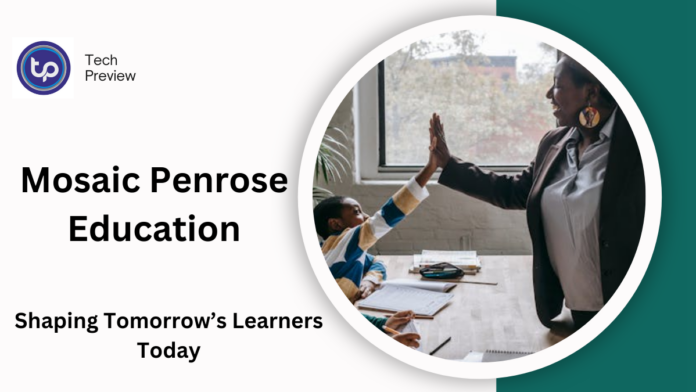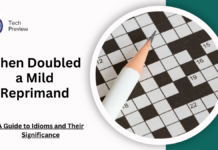Mosaic Penrose Education has emerged as a cutting-edge educational framework that combines modern technology with innovative teaching methodologies.
This approach is rooted in the concept of a “mosaic,” where diverse educational elements come together to form a comprehensive learning experience.
By integrating personalized learning paths, digital tools, and hands-on projects, Mosaic Penrose Education offers a dynamic environment where students can not only excel academically but also develop critical life skills.
In this article, we will explore how this education model works, its core principles, and how it is reshaping the way students learn today.
The Birth of Mosaic Penrose Education
The need for a transformative educational model became clear as traditional methods of teaching began to fall short in meeting the diverse needs of learners.
For years, education systems focused on rote memorization and standardized testing, leaving many students disengaged and unprepared for real-world challenges. Mosaic Penrose Education was created as an answer to this problem.
Drawing inspiration from holistic education philosophies, it aims to foster a balanced development of the mind, body, and spirit, promoting intellectual growth, creativity, and emotional resilience in learners.
By prioritizing adaptability and inclusivity, Mosaic Penrose Education goes beyond the limitations of conventional schooling. It acknowledges that every student learns differently and that learning should be a personalized journey.
Through a combination of modern educational technologies, collaborative efforts, and inquiry-based practices, Mosaic Penrose Education is paving the way for a more inclusive and forward-thinking education system.
Key Principles of the Mosaic Penrose Framework
1. Individualized Learning Journeys
At the heart of Mosaic Penrose Education lies the idea that no two students are the same. Rather than applying a universal, one-size-fits-all curriculum, the system tailors educational experiences to suit each learner’s unique strengths, interests, and challenges.
This approach is powered by adaptive learning technologies that adjust content to match the student’s proficiency, allowing them to progress at their own pace.
Whether a student is excelling and seeking advanced material or needs additional support to master certain concepts, personalized learning paths ensure that each student receives the attention and resources they need to thrive.
This individualized approach helps to build self-confidence, ensuring that no student is left behind while encouraging independent learning.
ALSO READ: Beryl Christie Harris: A Legacy of Excellence, Empathy, and Innovation
2. A Balanced Blend of Learning Methods
Mosaic Penrose Education embraces the concept of blended learning, merging the best of both traditional in-person instruction and digital platforms. This combination gives students the freedom to engage with material outside of the classroom at their convenience while maintaining structure through face-to-face lessons.
The blended model allows for flexible learning that adapts to students’ schedules and needs, giving them the opportunity to revisit content, collaborate online with peers, or engage with interactive digital resources.
Blended learning also encourages independent exploration of topics, helping students become self-directed learners. It allows for a hybrid approach where structured classroom time and digital learning coexist, giving students the best of both worlds.
3. Collaborative and Cooperative Learning
In today’s interconnected world, the ability to work effectively with others is more important than ever. Mosaic Penrose Education emphasizes the importance of collaborative learning, where students work together on projects, share ideas, and engage in peer-to-peer teaching.
Group projects, discussions, and collaborative problem-solving help foster essential skills such as teamwork, communication, and leadership.
This social learning environment also encourages the exchange of diverse perspectives, fostering a culture of critical thinking and creativity.
By working together, students learn to appreciate different viewpoints, collaborate on complex tasks, and resolve conflicts constructively, all of which are valuable skills in both their academic and personal lives.
4. Cultivating Curiosity Through Inquiry-Based Learning
In traditional education, students are often passive recipients of information. Mosaic Penrose Education turns this model on its head by adopting an inquiry-based learning approach. Here, students are encouraged to ask questions, explore topics of interest, and seek answers independently.
This active form of learning transforms students from passive learners into active participants in their education.
Inquiry-based learning fosters critical thinking and problem-solving skills, empowering students to take charge of their educational journey. Rather than simply memorizing facts, they learn to apply knowledge, question assumptions, and develop solutions to real-world problems.
5. Bridging Learning with Real-World Application
Mosaic Penrose Education places significant emphasis on making learning relevant to the real world. This model integrates case studies, internships, industry partnerships, and hands-on projects that help students understand how what they are learning applies to real-life situations.
By connecting academic concepts to practical experiences, students can see the value of their education in the context of their future careers and personal lives.
Real-world learning not only makes education more engaging but also prepares students to face the challenges they will encounter after graduation.
Whether through solving community problems, working with professionals in the field, or participating in internships, students gain invaluable experience that enhances their readiness for the workforce.
The Role of Technology in Mosaic Penrose Education
1. Adaptive Learning Systems
A key feature of Mosaic Penrose Education is its integration of adaptive learning technologies. These tools track a student’s progress in real-time, adjusting the difficulty of content as they demonstrate mastery of concepts.
For advanced learners, the system provides more challenging material, while students who need additional support are given extra resources to reinforce their understanding. This adaptive learning system ensures that students receive the right level of challenge, promoting optimal learning without overwhelming them.
2. Interactive Digital Tools
Mosaic Penrose Education leverages various digital tools to enhance the learning experience. Virtual simulations, educational games, interactive apps, and online resources make lessons more engaging and dynamic.
These tools help students visualize complex concepts, conduct virtual experiments, and explore historical events or scientific principles in new and interactive ways.
Digital tools also promote digital literacy, which is a crucial skill in today’s technology-driven world. By using these resources, students not only learn academic content but also develop the skills necessary to thrive in a digital economy.
3. Gamified Learning and Analytics
To make learning even more engaging, Mosaic Penrose Education incorporates gamification elements. Students earn points, complete challenges, and engage in friendly competition through leaderboards.
This approach increases motivation by making the learning process fun and rewarding, encouraging students to set and achieve personal learning goals.
Additionally, learning analytics provide real-time feedback to both students and educators, allowing them to track progress and identify areas for improvement. This data-driven approach ensures that teachers can personalize their teaching strategies, ensuring that each student receives the support they need.
Benefits of Mosaic Penrose Education
1. Greater Student Engagement
Mosaic Penrose Education fosters a high level of student engagement by making learning interactive and relevant. The integration of personalized learning, real-world applications, and collaborative projects helps students remain motivated and excited about their education.
2. Enhanced Learning Outcomes
Because the model tailors education to the unique needs of each student, learning outcomes are significantly improved. Personalized learning ensures that students understand the material more deeply and retain knowledge more effectively, leading to greater academic success.
3. Preparing Students for the Future
The skills fostered through Mosaic Penrose Education—critical thinking, problem-solving, creativity, collaboration—are exactly what students need to succeed in the 21st century. By focusing not just on academic knowledge but also on essential life skills, this approach prepares students to thrive in a rapidly changing world.
Challenges and Considerations
Despite its many advantages, Mosaic Penrose Education faces certain challenges. The reliance on technology means that both educators and students need to be digitally literate.
Personalized learning also demands significant resources, as teachers must manage individualized plans for each student.
Additionally, while blended learning offers flexibility, it requires careful coordination to ensure that both online and in-person learning complement each other effectively.
Conclusion
Mosaic Penrose Education represents a transformative shift in the way we approach learning.
By embracing personalized learning, modern technology, and collaborative teaching methods, it creates an environment where students not only excel academically but also develop the skills necessary for success in an ever-changing world.
Though there are challenges in implementing this model, its benefits are undeniable, and it holds the potential to shape the future of education.
People May Ask
1. How does Mosaic Penrose Education differ from traditional learning?
Mosaic Penrose Education differs by focusing on individualized learning paths, integrating modern technology, and encouraging collaboration. Unlike traditional education, which often follows a one-size-fits-all approach, this model adapts to the unique needs of each student.
2. How does personalized learning work in this model?
Personalized learning in Mosaic Penrose Education is powered by adaptive learning technology that adjusts content based on a student’s progress, strengths, and areas of improvement, ensuring that they receive a tailored learning experience.
3. What role does technology play in this educational model?
Technology plays a vital role in Mosaic Penrose Education, with digital tools, interactive simulations, and adaptive learning platforms helping to enhance learning, increase engagement, and foster digital literacy among students.
4. What are the key skills students develop through this model?
Students develop critical thinking, creativity, problem-solving, collaboration, and communication skills—competencies that are essential for success in both academic settings and the modern workforce.
Click here to learn more.









